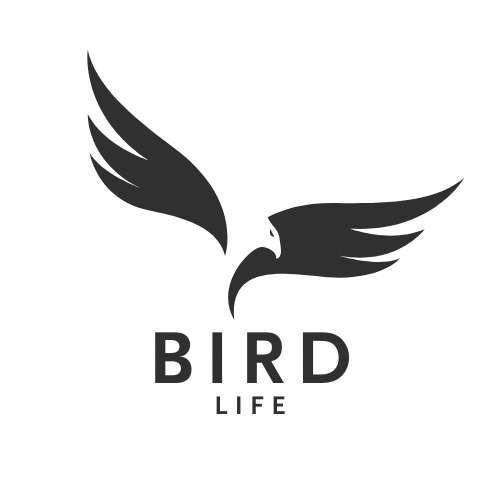The red-legged seriema (Cariama cristata) stands as one of South America’s most distinctive and peculiar birds, yet remains relatively unknown to those outside ornithological circles. With its stilt-like crimson legs, unusual crest, and remarkable behaviors, this avian marvel represents a fascinating evolutionary story that has allowed it to thrive in the grasslands and savannas of Brazil, Argentina, Bolivia, Paraguay, and Uruguay. Often called the “guardian of the fields” by locals, the red-legged seriema combines prehistoric appearance with modern adaptations that make it not just a survivor, but a specialized predator with characteristics unlike any other bird in its habitat. Its unique combination of physical traits, behaviors, and ecological role make it worthy of closer examination and appreciation.
Ancient Evolutionary Origins
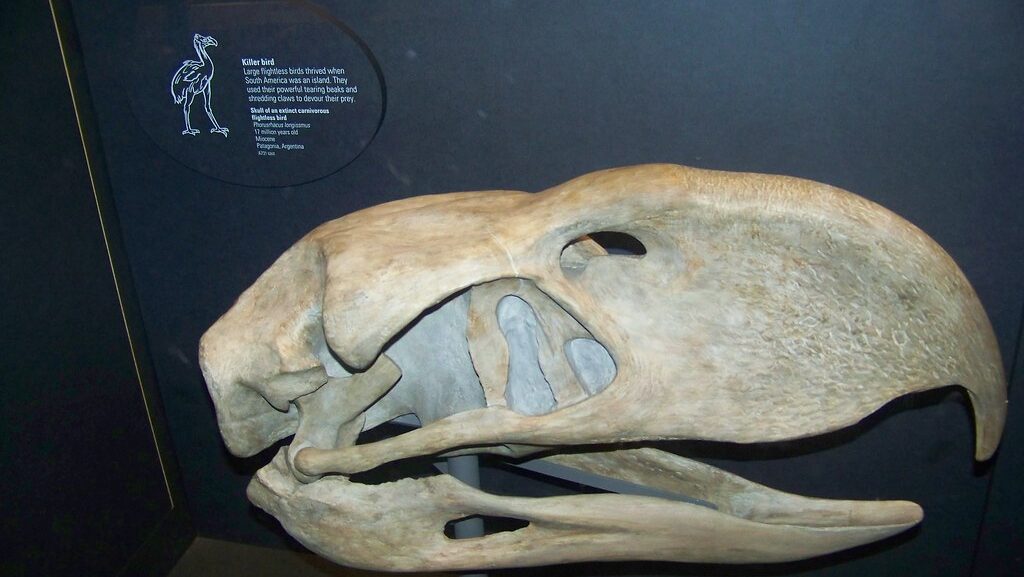
The red-legged seriema belongs to the Cariamidae family, which represents one of the oldest lineages of birds still in existence today. Fossil evidence suggests that seriemas are living descendants of the phorusrhacids, also known as “terror birds,” massive flightless predators that dominated South America millions of years ago. While modern seriemas are considerably smaller than their prehistoric relatives, they retain several ancestral characteristics that link them to these ancient avian predators. Their specialized killing claw, powerful beak, and predatory habits all point to this prehistoric heritage. The red-legged seriema essentially offers scientists and bird enthusiasts a living window into avian evolutionary history, representing one of the few remaining descendants of a once-dominant group of birds.
Distinctive Physical Appearance
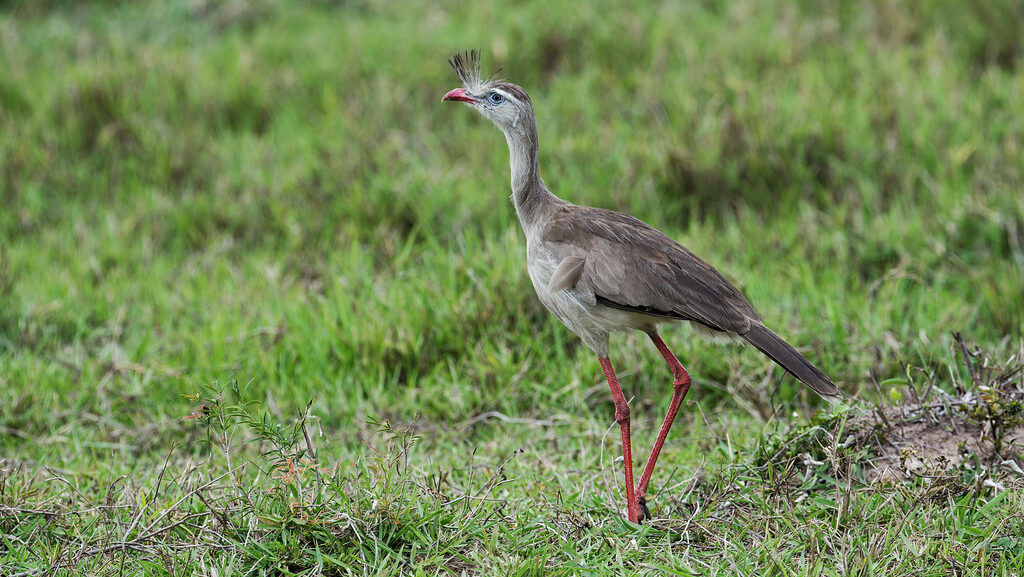
Standing approximately 35 inches (90 cm) tall, the red-legged seriema presents a striking silhouette with its slender body perched atop extraordinarily long, bright red legs. Perhaps its most distinguishing feature is the fan-like crest of feathers that rises from the base of its bill, giving the bird a perpetually startled appearance. Their plumage is primarily grayish-brown with fine barring, providing excellent camouflage in their grassland habitats. The facial area features bare skin around the eyes with a distinctive blue-gray coloration that contrasts with their sharp, slightly hooked beak. Their wings are broad but relatively short, reflecting their limited flying capabilities, while their long tail helps with balance during their rapid running movements. This combination of features creates a bird that looks almost like a cross between a secretary bird, a bustard, and a roadrunner.
The Specialized Hunting Claw

One of the most remarkable adaptations of the red-legged seriema is its specialized second toe, which features an elongated claw reminiscent of the killing claw seen in velociraptor dinosaurs. This adapted digit serves as a vital hunting tool that the seriema uses with surprising precision and effectiveness. When hunting, the bird will grasp prey with its foot, then repeatedly slam it against the ground or a hard surface to kill or stun it before consumption. This specialized claw is particularly useful when dealing with venomous prey such as snakes, allowing the seriema to maintain a safe distance while dispatching potential threats. The evolution of this specialized digit represents a perfect example of form following function, as it enables the bird to handle prey items that might otherwise be too dangerous or difficult to manage with just its beak.
Remarkable Vocal Abilities
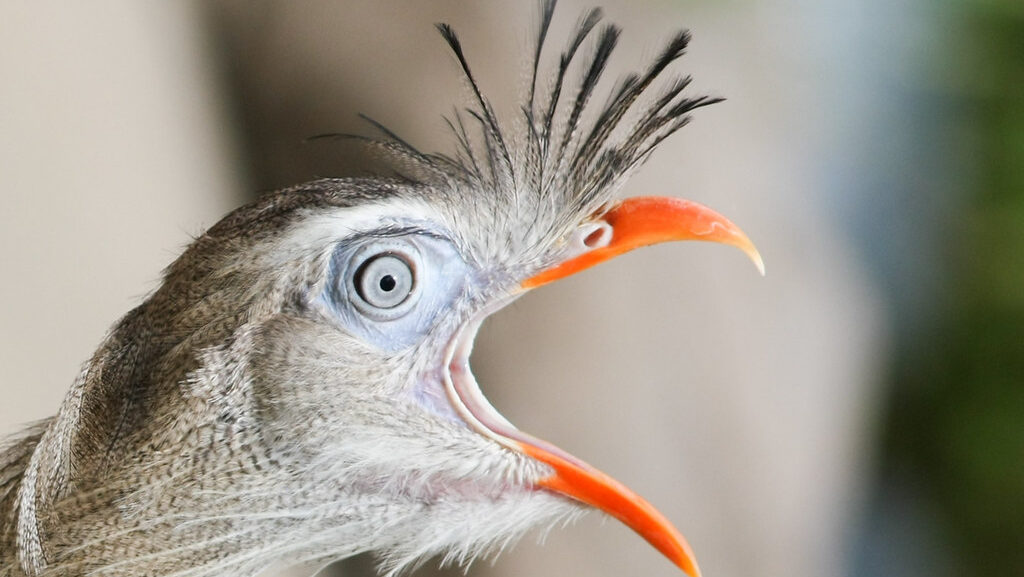
The red-legged seriema possesses one of the most distinctive vocalizations in the avian world – a loud, far-carrying series of yelping notes that gradually increase in tempo and pitch. These calls, often described as sounding like a puppy’s bark that transforms into a rattling scream, can be heard over remarkable distances across their open habitat. Mated pairs frequently engage in coordinated duets, with precise timing that suggests complex communication between the partners. These vocalizations serve multiple purposes, including territorial declaration, pair bonding, and predator warnings. The seriema’s unique vocal sac allows it to amplify these calls, making them audible up to a mile away in favorable conditions. Many local South American cultures have incorporated the seriema’s distinctive call into folklore, with some indigenous groups believing the birds can predict rain or warn of approaching danger.
Exceptional Running Capabilities
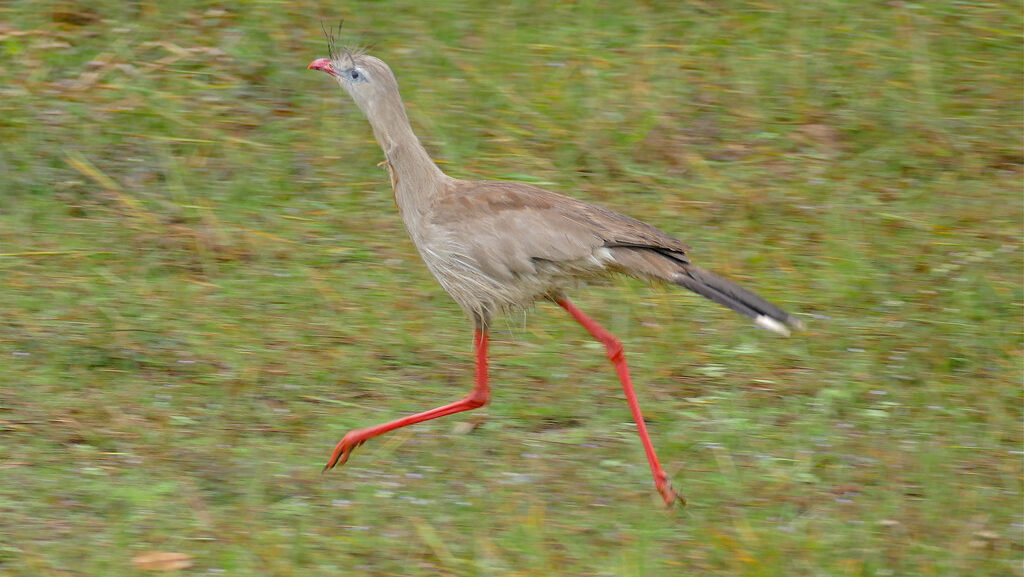
Despite being capable of flight, the red-legged seriema prefers to escape danger on foot, showcasing remarkable running abilities that can reach speeds of up to 15 miles per hour (24 km/h). Their long legs and lightweight build make them perfectly adapted for rapid movement through their grassland habitats. When pursued, they adopt a distinctive running style with their heads lowered and bodies parallel to the ground, maximizing speed and aerodynamics. Seriemas can maintain these impressive speeds over considerable distances, only taking to the air when absolutely necessary or when seeking an elevated perch for roosting or observation. Their running prowess represents an evolutionary compromise between the complete flightlessness of their terror bird ancestors and the fully developed flight capabilities of most modern birds, allowing them to occupy a specialized niche where running serves as their primary mode of locomotion while retaining limited flight capabilities.
Unique Nesting Behaviors

The red-legged seriema exhibits fascinating nesting behaviors that set it apart from many other avian species. Unlike ground-nesting birds that might be expected in open grasslands, seriemas construct their nests in elevated positions, typically in trees or large shrubs approximately 3-6 feet (1-2 meters) above ground. The nest itself is a relatively simple platform built from sticks and lined with leaves, clay, and occasionally dung, forming a shallow cup. Both parents participate in nest construction, incubation duties, and subsequent chick rearing, demonstrating strong pair bonds. The female typically lays 2-3 white or buff-colored eggs with reddish-brown speckles, and the incubation period lasts approximately 24-30 days. This elevated nesting strategy provides protection from ground predators while still keeping the nest accessible for the limited flying capabilities of the adults.
Versatile Omnivorous Diet
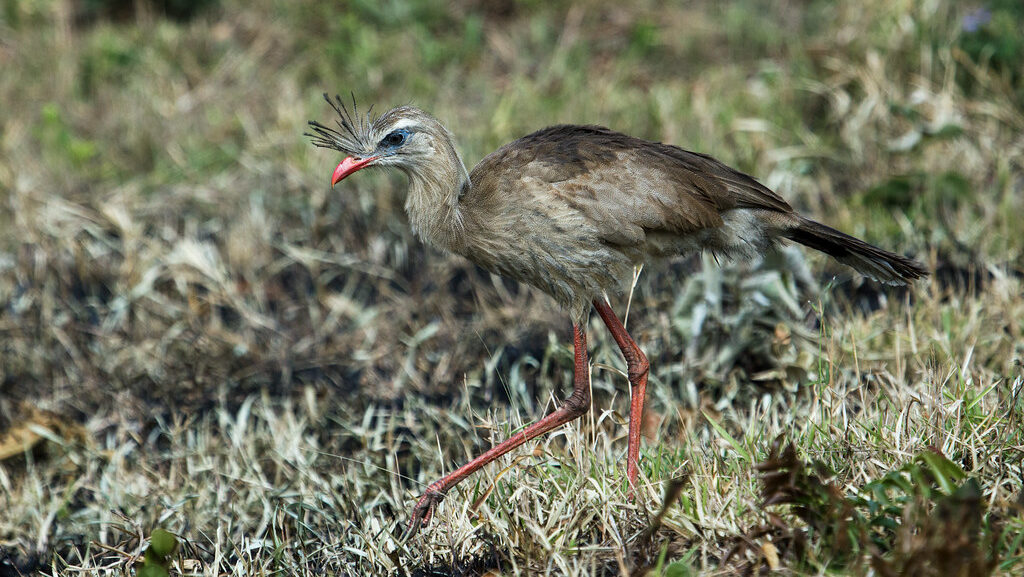
The dietary flexibility of the red-legged seriema contributes significantly to its evolutionary success across various habitats. These birds are primarily carnivorous but maintain an opportunistic omnivorous approach that allows them to adapt to seasonal food availability. Their diet centers around small reptiles, particularly snakes and lizards, along with large insects, rodents, and small birds. They demonstrate remarkable hunting skills, using their powerful beaks and specialized claws to capture and dismember prey. During seasons of limited animal prey, seriemas readily supplement their diet with plant material including berries, fruits, and seeds. This dietary versatility allows them to maintain territories year-round without the need for migration, even when seasonal changes dramatically affect prey availability. Their ability to consume both venomous and non-venomous snakes makes them particularly valuable in agricultural areas, where they help control potentially dangerous reptile populations.
Snake-Killing Expertise

The red-legged seriema has earned a well-deserved reputation as one of South America’s most efficient snake hunters, developing specialized techniques for dealing with these potentially dangerous prey. When encountering a snake, the seriema employs a careful strategy of rapid strikes with its beak, targeting the snake’s head while maintaining a safe distance using its long legs. For larger or more dangerous snakes, the bird will grasp the reptile with its specialized claw, then repeatedly slam it against the ground with impressive force until it’s incapacitated. This behavior has made seriemas highly valued by farmers and ranchers across their range, as they naturally control venomous snake populations that might otherwise threaten livestock or humans. Remarkably, seriemas appear to have natural resistance to certain snake venoms, though they still prioritize attacking the head first to minimize risk during these encounters.
Social Structure and Family Bonds
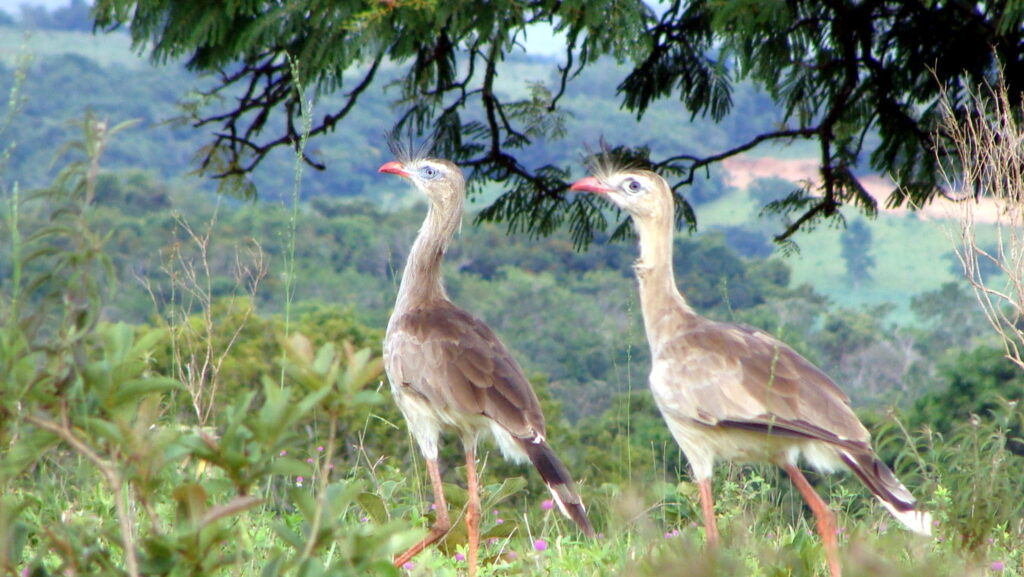
Red-legged seriemas typically establish monogamous pair bonds that often last for multiple breeding seasons, demonstrating stronger family cohesion than many other bird species in their habitat. These pairs maintain and defend territories of approximately 1-2 square kilometers throughout the year. Young seriemas experience an unusually long period of parental care, remaining with their parents for up to 8-10 months after hatching – much longer than most bird species of similar size. During this extended family period, parents teach offspring essential survival skills including hunting techniques, predator recognition, and territorial vocalizations. This prolonged learning period appears crucial for developing the complex hunting and survival behaviors necessary for seriema success. Outside the breeding season, seriemas occasionally form small family groups of 3-5 individuals, usually consisting of parents and their offspring from the most recent breeding season.
Cultural Significance in South America
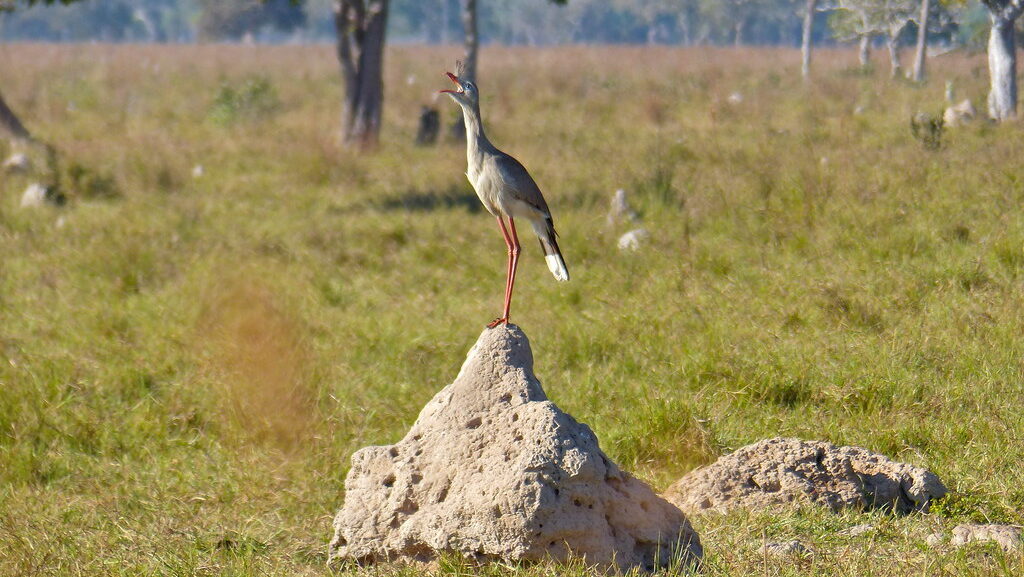
The red-legged seriema holds a special place in the folklore and cultural traditions of many South American societies. In rural Brazil, the bird is often considered a protective presence, with its alarm calls supposedly warning of approaching strangers or potential danger. Some indigenous groups in Paraguay and Argentina traditionally believed that keeping seriemas near settlements would drive away snakes and bring good fortune. The bird appears in various forms of regional art, including pottery, textiles, and folk music, often symbolizing vigilance and protection. In parts of rural Brazil, the seriema’s distinctive call has been incorporated into traditional morning songs, with its rhythmic pattern mimicked by percussion instruments. Despite increasing urbanization, the seriema continues to feature prominently in regional identity, appearing as mascots for conservation organizations and ecological education programs throughout its range.
Conservation Status and Challenges
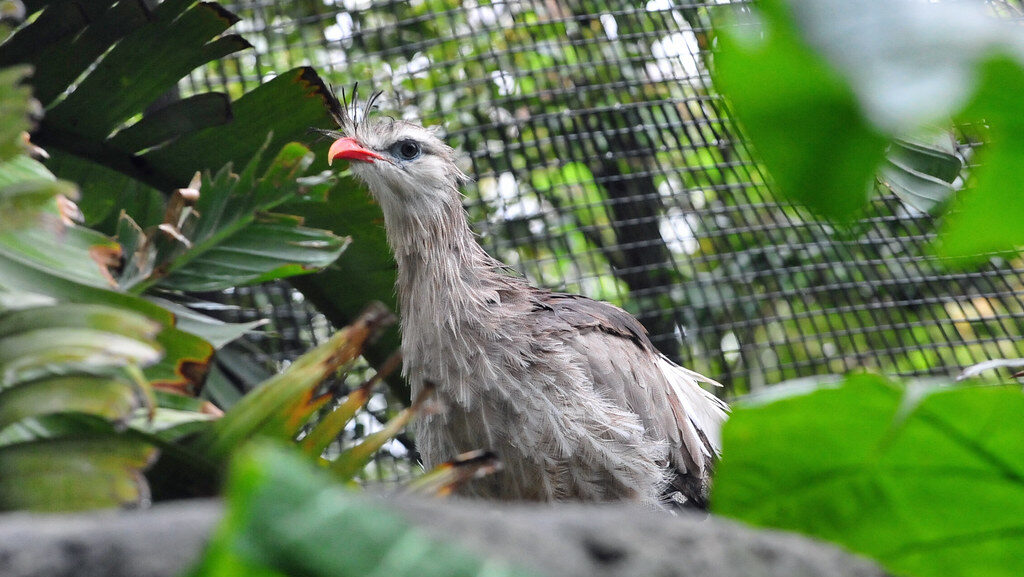
Currently classified as Least Concern on the IUCN Red List, the red-legged seriema has demonstrated remarkable adaptability to certain human-modified landscapes, particularly cattle ranches and lightly managed agricultural areas. However, the species faces increasing challenges as intensive agriculture expands across its native range. The conversion of natural grasslands to monoculture farming, particularly soybean production, eliminates the mosaic habitat structure seriemas require for successful breeding and foraging. Increased use of pesticides in agricultural regions reduces insect prey availability and may cause secondary poisoning when seriemas consume contaminated prey. Road mortality represents another significant threat, as these ground-dwelling birds frequently cross roadways and may be struck by vehicles. Climate change models suggest potential range contractions in coming decades, particularly in the southern portions of their distribution where increasing temperatures and altered precipitation patterns may render habitats unsuitable.
Captive Breeding and Education Efforts
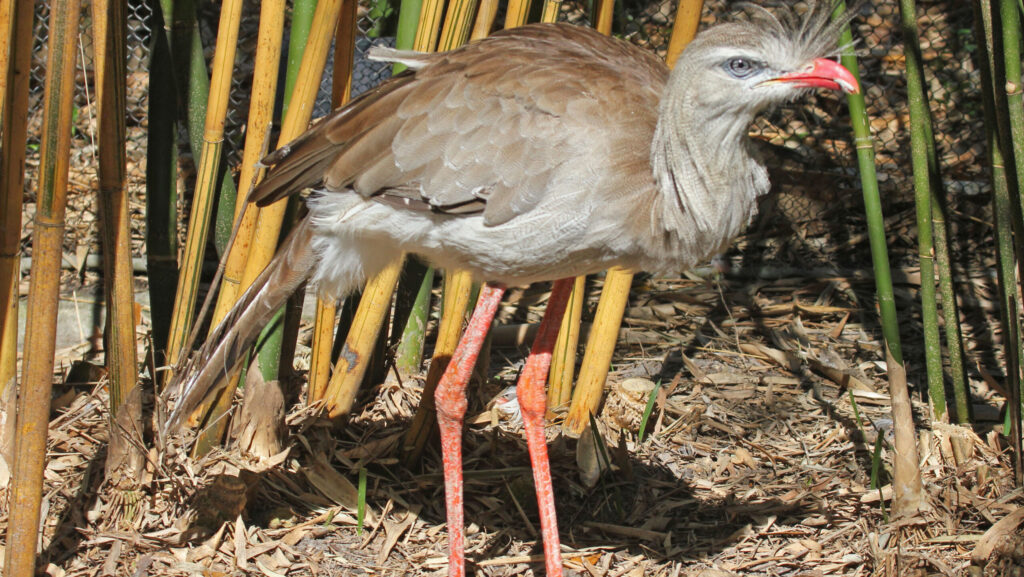
The unique characteristics of the red-legged seriema have made it a valuable species for captive breeding programs and conservation education. Several major zoos across North America and Europe maintain breeding populations, helping to educate the public about South American grassland ecosystems while developing husbandry techniques that could prove vital if wild populations decline. These captive programs have revealed fascinating insights about seriema behavior, including their remarkable intelligence and problem-solving abilities. Specialized training programs have demonstrated that seriemas can learn complex behaviors through positive reinforcement, suggesting cognitive abilities comparable to some corvid species. Zoo-based education programs frequently highlight the seriema’s role as a snake controller, helping to counter negative perceptions about predatory birds while emphasizing their ecological importance. Conservation organizations in Brazil and Argentina have incorporated seriemas as flagship species for grassland protection initiatives, using their distinctive appearance and behaviors to generate public support for habitat preservation efforts.
Conclusion

The red-legged seriema represents one of nature’s most fascinating evolutionary success stories – a living link to prehistoric avian predators that has successfully adapted to modern ecosystems through specialized adaptations. From its distinctive appearance and vocalizations to its remarkable hunting techniques and social behaviors, virtually every aspect of this bird reveals unique specializations that have enabled its survival across a changing landscape. As South American grasslands continue to face increasing human pressure, the seriema’s future will depend on balancing agricultural development with habitat conservation. By appreciating and protecting this extraordinary bird, we preserve not just a unique species, but a living window into avian evolutionary history and a crucial component of grassland ecosystems.
